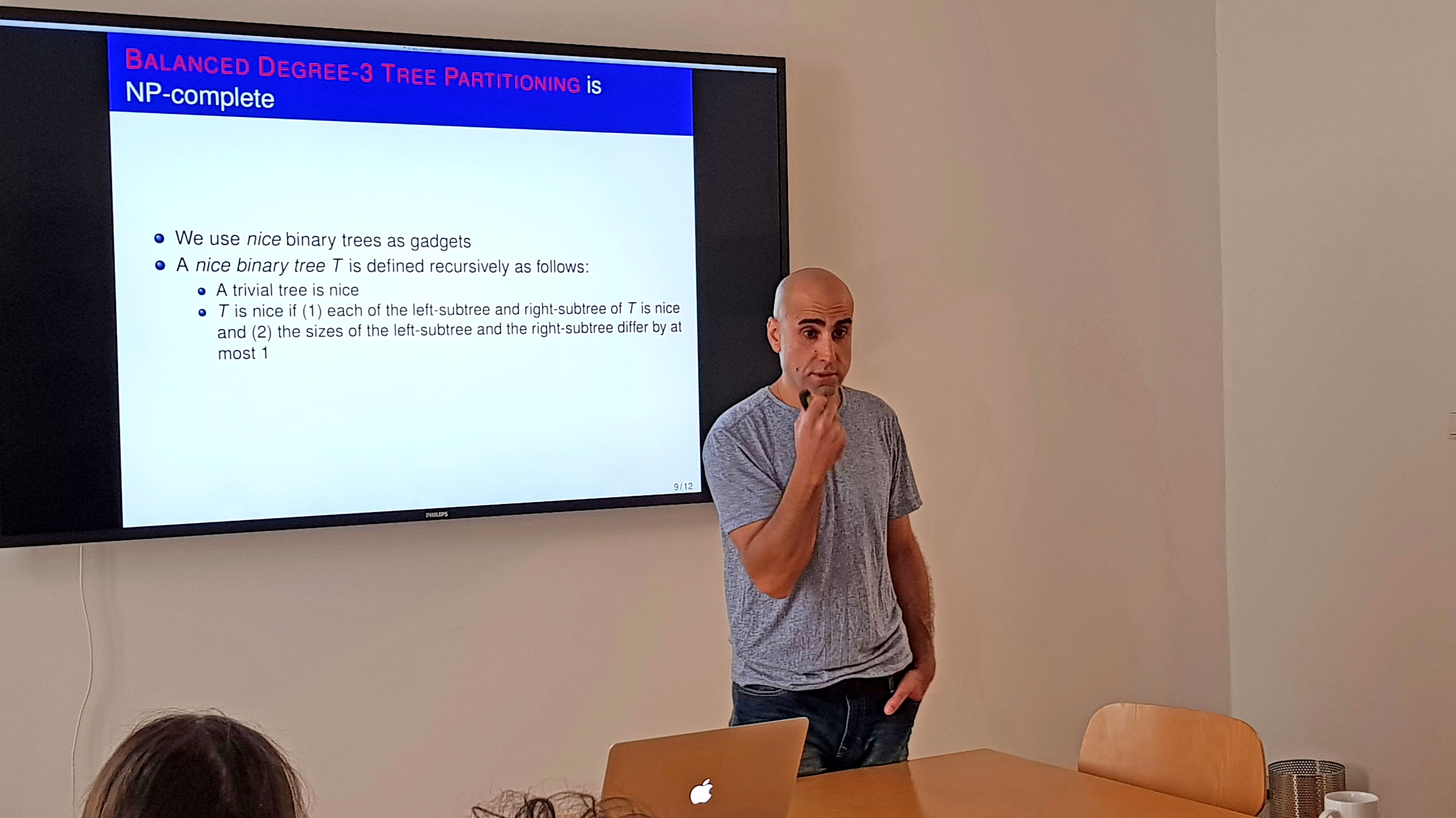Iyad Kanj
The complexity of tree partitioning
VCLA hosted a talk by Iyad Kanj
| DATE: | Wednesday, August 23, 2017 |
| TIME: | 11:30 s.t. |
| VENUE: | Library, Favoritenstraße 9-11, Stairs 2, Floor 4 (HB 04 08) |
ABSTRACT
Given a tree T on n vertices, and k, b, s_1, ..., s_b in N, the General Tree Partitioning problem asks if at most k edges can be removed from T so that the resulting components can be grouped into b groups such that the number of vertices in group i is s_i, for i =1, ..., b. The case when s_1=... =s_b =n/b, referred to as the Balanced Tree Partitioning problem, was shown to be NP-complete for trees of maximum degree at most 5, and the (classical) complexity of the problem for trees of maximum degree 4 and 3 was posed as an open question. The parameterized complexity of Balanced Tree Partitioning was also posed as an open question in another work.
In this work, we answer both open questions negatively. We show that Balanced Tree Partitioning, and hence General Tree Partitioning, is NP-complete for trees of maximum degree 3, thus closing the door on the classical complexity of Balanced Tree Partitioning as the simple case when T is a path is in P. In terms of the parameterized complexity of the problems, we show that both Balanced Tree Partitioning and General Tree Partitioning are W[1]-complete. Finally, using a compact representation of the solution space for an instance of the problem, we present a dynamic programming algorithm for General Tree Partitioning, and hence for Balanced Tree Partitioning, that runs in subexponential-time 2^{O(sqrt{n})}, adding a natural problem to the list of problems that can be solved in subexponential time.

